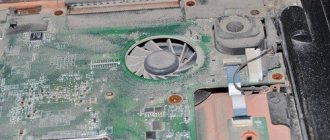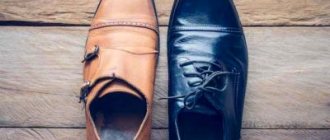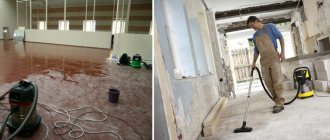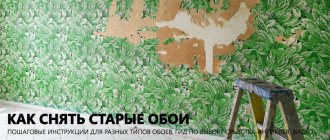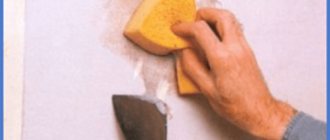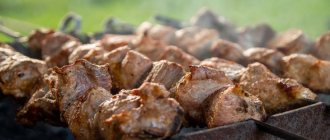Required Tools
First, make sure you have the right tools and equipment. Otherwise, the work process risks becoming more complicated and causing considerable trouble. You will need: a wide construction spatula, a construction scraper, a sanding machine with sanding attachments of different grain sizes, a roller, a sponge, a hard sponge, and a large container for water. Also, do not forget about safety while working. Be sure to wear protective clothing, rubber or fabric gloves, a respirator, and construction glasses.
Dry cleaning method
You can remove whitewash from the ceiling using the dry method using the following tools:
- Using a sanding machine you can efficiently remove the former coating. But working with such a tool requires skills;
- spatula or brush with metal bristles. This method takes too much time and the work is carried out with great effort;
- hammer. It happens that the lime coating holds very tightly. And it can only be knocked down with a hammer. The entire ceiling surface is carefully tapped with a hammer. Part of the layer will fall off, the rest of the coating is removed with a spatula.
Dry methods for removing whitewash are characterized by a large amount of dirt and dust during work. It is imperative to use a gauze bandage and protect your eyes from dust.
Methods for removing whitewash
The easiest way to remove old whitewash is to soak it and remove it. To do this, heat the water and use a sponge to generously treat the area. Wait until the water is absorbed, and then use a construction spatula to pry and remove the layer. Repeat the manipulations until all the whitewash has been removed.
2. Scraper and wire brush
Quite a labor-intensive method, but no less effective. Be careful: a lot of whitewash and dust will fly in the process, so don't forget your glasses and a respirator. Take a wire brush and go over the surface in a circular motion. If the whitewash sticks tightly in some places, use the sharp corner of a construction scraper.
3. Grinder or vacuum cleaner
The sanding machine will remove the whitewash material to the last residue. Use sanding pads ranging from coarse to fine. As the whitewash layer becomes thinner, move from large to fine grains. A washing vacuum cleaner is also effective in this matter. Use only unnecessary equipment, because after the procedure you will not be able to use a vacuum cleaner.
Unnecessary waste paper can be used for household purposes. Soak the base of the paper with wallpaper glue or paste and apply it to the whitewash, freeing one edge. Wait until the product dries, and then tear off the paper along with the whitewash.
Cook a sticky solution from 1 tbsp. flour and a small amount of warm liquid. Prepare enough water to cover the entire surface and place on the stove. Pour the resulting product into the boiling liquid and mix thoroughly. Wait until the liquid has cooled and the adhesive is ready for use. Apply the solution to a small area and allow it to soak into the whitewash. Next, remove the layer with a scraper. This way the whitewash will come off neatly and not create dust.
6. Soap and soda solution
Folk remedies perfectly remove whitewash, chalk and lime. Take laundry soap, grate it or finely crumble it, and then dissolve it in 5 liters of boiling water. Next, add half a pack of soda ash there. Soak a washcloth in the liquid and run it over the entire surface of the whitewash. The finishing material is easily washed off, especially if you apply the product in a dense layer.
7. Salt concentrate
Another working tool is concentrated salty liquid. It’s easy to prepare: add a pack of table salt to the required amount of hot liquid. Stir well and use a sponge to apply the product area by area. The technology is similar to methods with water and paste.
8. Foam and ammonia solution
The solution is prepared as follows. Dilute 2 tbsp in 3 liters of warm water. ammonia and add 3 caps of diluted bath soap. In another container, mix 0.5 liters of water, 3 tbsp. soda and pour into the first liquid. Stir the resulting product thoroughly and apply it to the whitewash in small areas. Be sure to wear rubber gloves.
9. Soda solution
Take 5 liters of water and pour half a pack of baking soda into it. Stir the liquid until the white substance is completely dissolved. Soak a foam roller in the product and treat the surface. After 10 minutes, remove the remaining whitewash with a scraper.
10. Ready-made products
You don’t have to make the solution yourself; hardware stores sell special whitewash removers. The products affect the composition of the finishing material, literally dissolving it from the inside. Probel is one of the most popular and relatively safe washes. Be sure to wear a respirator and gloves while working.
Whitewashing is also often used in garden areas. We advise you to read whether it is worth whitewashing trees this spring.
Did you like the article? Then support us, click
:
Source
Dry whitewash removal method
There is also an interesting method for removing whitewash. For this you will need a lot of newspapers.
To remove the whitewash, you will need to use wallpaper glue to glue the newspapers to the walls, leaving a small gap between them and bending one corner of each newspaper. After the glue has dried, it is necessary to dismantle the newspapers. Simply pull the folded corner of each newspaper and remove them along with the whitewash.
In the future, it will also be necessary to prime the walls.
Professional tricks on how to quickly and easily remove lime from walls
Anyone who has ever renovated their home is familiar with the unspoken rule: the quality of preparation of rough surfaces before finishing determines the appearance of the room after the remodel.
And if everything is clear with old wallpaper, then not everyone knows how to remove lime from the walls or ceiling.
Recommendations from experienced craftsmen will help you understand this issue and clean the walls of lime as quickly and efficiently as possible.
General recommendations
Check out the recommendations that will help you cope with the old whitewash layer:
- Before washing off the coating, be sure to check how thick the old coating is in order to choose the correct removal method. In the selected area, try the selected option;
- if you attach a special tray for crumbling cladding to a spatula, there will be less dirt on the floor;
- when you start to moisten parts of the ceiling covering, try to ensure that the water does not drain, but saturates the ceiling surface as much as possible;
- One should take into account the fact that more than one layer of wash may be needed to completely remove the old coating.
After the preparatory work, chalky dirt will still collect on the floor, even if it is covered with film. For high-quality floor cleaning, you can dilute vinegar in water.
Do not forget that ready-made removers, sold in construction markets, greatly simplify the process of removing the old whitewash layer. Special compositions are produced that effectively remove chalk and lime whitewash. Basically, these are liquid solutions based on PVA glue, or concentrated mixtures that form a small amount of foam.
How to remove old coating?
Conventionally, methods for removing lime from walls are divided into “dry” and “wet”.
The “dry” or, as it is also called, the mechanical method, consists in the fact that the surface of the wall, without pre-treatment with any compounds, is cleaned with a spatula, metal brush or sander .
The “wet” method involves impregnating the lime layer with liquid, after which it becomes loose, ready for quick removal with a spatula or brush.
Putty knife
The most common way to remove limescale from a wall is with a spatula. This process is quite labor-intensive and time-consuming, but it is the spatula that helps clean the surfaces efficiently.
Algorithm of actions:
- Using a soft sponge, wide brush or roller, thoroughly moisten the lime layer on the wall with warm water and leave for at least fifteen minutes.
- As soon as the lime has absorbed moisture, the soft, swollen layer is removed with a spatula.
This way the entire surface is cleaned layer by layer. It is important not to rush, to carry out work locally, wetting small areas of the wall and quickly removing the swollen lime layer.
How to clean with a grinder?
One way to “dry” remove whitewash is to use a sander.
An emery wheel with the coarsest grain possible is fixed to the tool . Having protected the eyes with construction glasses and the respiratory tract with a respirator, the remaining limestone layer is removed from the wall using gentle rotational movements.
Soap solution
To quickly remove the limescale layer from the wall, you can use another proven, inexpensive solution - a soap solution.
Algorithm of actions:
- in a bucket (7-10 l) with warm water, dissolve the shavings of half a bar of laundry soap;
- using a soft sponge or a wide brush, apply the resulting soap solution to the wall and leave for five to ten minutes;
- as soon as the layer of lime is saturated with liquid, it can be easily removed with a soft cloth (if necessary, dry areas are cleaned with a spatula).
As an option, to prepare a soap solution, you can use liquid dishwashing detergent or washing gel (2-3 tbsp is enough for 10 liters).
Paste
A paste will help to clean the wall of the lime layer without dust and difficult to wash off dirty streaks.
Algorithm of actions:
In a large saucepan (5-8 l), bring water to a boil.- Separately, add flour or starch (2 tbsp) in a thin stream to a small amount of boiling water (no more than 1 liter). During the preparation process, the solution must be stirred all the time.
- The resulting mixture is poured into a saucepan with boiling water (do not forget to stir all the time). The result should be a solution whose consistency resembles thick sour cream or jelly.
- Using a soft wide brush, apply the paste to the wall.
- After the adhesive mixture has dried, it can be easily cleaned off along with the lime with a wide spatula.
Washing vacuum cleaner
A washing vacuum cleaner can quickly remove a thin layer of lime on the wall. Using a special nozzle, water is sprayed over the surface, after which the softened lime layer is sucked up by a vacuum cleaner.
A washing vacuum cleaner is used to clean small, local areas of the wall covered with lime. This household appliance is not designed for this kind of cleaning, therefore, with a large load, there is a high risk of breakdowns.
Spray
Treating the surfaces with a vinegar solution through a spray bottle will help to quickly soften the layer of lime whitewash.
The steps are simple: dissolve 1 tbsp in five liters of warm water. vinegar. The resulting liquid is sprayed onto the wall through a spray bottle and left for five to ten minutes. As soon as the lime layer swells, it is cleaned off with a brush or spatula.
Unnecessary newspapers or wallpaper
Remaining lime on the wall will help remove newspapers or thin paper wallpaper.
It's simple:
- Wallpaper glue is diluted in a wide basin (the consistency of the mass should resemble thick sour cream).
- Using a roller or a wide brush, thoroughly coat the layer with lime and glue and immediately apply newspapers or old wallpaper.
- After two or three minutes (the glue should set), the pieces of paper are torn off along with the lime layer.
After cleaning, sweep the surface with a brush (if necessary, clean off the remaining whitewash with a wide spatula).
Acid and water
In a situation where, using a soap solution, paste or a washing vacuum cleaner, it was not possible to completely remove the layer of lime from the wall, acid solutions will come to the rescue.
Preparing surfaces for repair: removing whitewash
If you can’t do without washing off the lime, let’s learn how to remove this finish quickly, easily, effectively and in different ways. There are several of them. So you can choose the one that suits you.
Important: before you start cleaning whitewashed surfaces, remove all furniture and carpets from the room. If there is nowhere to remove interior items during repairs, wrap them with film, otherwise it will be very difficult to wash everything and clean it from dust later.
Removing whitewash using the “dry” method quickly
This method of cleaning walls from old whitewash is the simplest and fastest, but be prepared for the fact that there will be a lot of dirt and dust after such an event. You will also need special tools.
To work you will need the following:
Don’t worry, you won’t need everything at once. There are simply several options for dry lime removal from surfaces.
For speed, quality and simplicity, use a sander. Put a coarse sandpaper on it and walk over the desired surfaces with rotational movements.
If you don’t have such a power tool at hand, take a chisel and, applying it at an acute angle to the wall or ceiling, tap it a little with a hammer. After you have made several notches, try to pick up the layer of lime with a spatula and remove it from the surface.
And it also happens that the lime is too old and peels off from the walls and ceiling. In this case, you will not need anything other than a spatula. It will easily scrape off unnecessary coating from surfaces. Then go over the entire area with a wire brush.
After completing any of these procedures, sweep the surfaces with a broom or large soft brush to remove dust. And then go over them with a primer. Now the ceiling or walls are ready for a new finish.
Advice: before you start cleaning surfaces from lime using a dry method, hang a sheet moistened with water on the door leading from this room to other rooms, otherwise the dust will spread throughout the entire home.
"Wet" method of removing lime
All “dry” options for getting rid of old coating, except for a sander, take a lot of effort and time. So if you don't have this useful tool, we recommend trying to remove limescale using water.
For the “wet” method of cleaning surfaces from lime you will need:
Pour more water into a bowl, soak the sponge, wring it out a little and wet the surfaces to be cleaned with it. Moisturize as much as possible because whitewash quickly absorbs moisture.
After this, go over the surfaces again with a soft roller soaked in water, and after 15 minutes, start scraping off the whitewash with a spatula.
This is a very labor-intensive task, so we offer more effective and faster options for removing lime - using special solutions rather than ordinary water. You can find them at any hardware store, or prepare them yourself.
Solution No. 1
Mix 5 liters of water, 50 ml of ammonia and 100 ml of soda solutions (pre-dilute them with water in proportions 1:3), 30 ml of bath foam and 20 ml of 9% vinegar. Heat the mixture to 50 degrees and moisten the surfaces with it.
Solution No. 2
Mix copper sulfate and hydrochloric acid in a 1:1 ratio, apply to old whitewash, leave for 20 minutes.
Solution No. 3
In 10 liters of water, dilute 100 g of baking soda and 60 g of any soap crushed with a grater. Sprinkle this solution liberally on walls or ceilings whitewashed with lime.
Solution No. 4>
In fact, this is the most ordinary paste. It is prepared like this: 40 g of starch is mixed in a liter of water. And then this mixture is gradually added to boiling water. Cook the mixture a little, stirring vigorously until it begins to thicken. Starch can be replaced with flour. Apply paste to the surface covered with lime and let dry.
Solution No. 5
In a bucket of water (10 l), dilute the contents of one bottle of iodine. Apply the composition to the lime - in this way it is easy to remove even the thickest layer.
After using any of these solutions, the whitewash can be easily removed with a spatula.
Advice: it is more convenient to apply all these mixtures not with a sponge, brush or roller, but with a spray gun or spray gun.
With noise, but without dust
There is another way to wash off whitewash from walls, and at the same time it will work quickly and cleanly. But this is only possible if you have an old, unnecessary washing vacuum cleaner.
To do this, fill its tank with one of the solutions described above, or a special one purchased in a store, and wash all surfaces intended for cleaning. If there are no more than 2-3 layers of whitewash on them, this method will be very effective. True, the vacuum cleaner will no longer work.
Adviсe
Water will help determine the approximate composition of whitewash on the wall.
You need to apply a few drops to the surface and see what happens next. If the drops are quickly absorbed into the surface, the whitewash is chalk . Drops remain on the surface - lime whitewash.
There is no need to rush and try to cover a large area of the lime layer on the wall at once. By washing off the whitewash in small sections, you can clean the surfaces much faster and, importantly, with better quality.
If, during the process of removing lime from the wall, white spots appear on the floor, potassium permanganate will help remove them . It is enough to dissolve a few granules in two liters of warm water and rinse the dirt with the resulting solution.
Why remove whitewash
Today, whitewash is used extremely rarely; it has been almost completely replaced by improved and inexpensive options for decorating ceilings: wallpaper, plaster, suspended or tensioned decorative structures. When installing plasterboard, slatted or suspended ceilings, you will not need to remove the whitewash. You can only apply a layer of deep penetration primer on top. It is also allowed to whitewash ceilings using old whitewash. It is necessary to clean the ceilings from lime if:
- mold has formed on them;
- you decided to paint them with water-based emulsion;
- Expanded polystyrene boards will be used as finishing.
On a note! To determine what kind of whitewash was used for the ceiling, you need to spray its surface with water. Chalk whitewash will absorb drops, and with lime whitewash, splashes of water will collect on the ceiling surface.
Preparation
Regardless of the means used to whitewash, preparation is required before removing it. Since the upcoming work is accompanied by the formation of a large amount of dust and dirt, it is necessary:
Remove as many furnishings as possible from the room. It is especially important to remove upholstered furniture.- Those pieces of furniture that will remain in the room during repair work should be well covered with polyethylene film. Fabric covers are not suitable for these purposes.
- Prepare a stepladder, the height of which will allow the worker to reach the top of the wall.
- You need to prepare tools for work in advance (their list depends on the approach to cleaning the walls).
- Place a wet rag on the threshold of the room being repaired.
- It is important to ensure that the room is isolated from other rooms. This is necessary so as not to spread whitewash throughout the house. In addition to closing the door tightly, you should fill the cracks with foam rubber or seal them with tape.
- If you need to protect the floor from whitewashing, it is best to use cellophane. Newspapers are not effective for such purposes, as they have low strength, and upon contact with water they tear, allowing dirt to pass through.
Before starting work, it is necessary to take care of personal protection - clothing and headgear for repairs, as well as a respirator and safety glasses.
Wash off without dirt
When preparing the surface for applying a new coating, you want to wash off the whitewash from the ceiling without dirt. For this, newspapers and prepared paste are used.
The work is carried out as follows:
- First the paste is prepared. A container with plain water is placed on gas. While the water begins to boil, pour some water into another container and dissolve the flour in it. After the water boils in the first pan, flour diluted with water is slowly added to it. The solution must be constantly stirred until it reaches the consistency of a batter. Leave the finished composition to cool;
- next you need to take old newspapers and soak them in the cooled paste, then glue them to the ceiling surface;
- Do not smear the corners of newspapers with adhesive;
- wait until the paste hardens;
- tear off the newspapers with a sharp movement at the corners. The newspapers will come off immediately with the old whitewash layer.
Remains of the adhesive composition with whitewash are easily washed off with a mop soaked in water. You can use cheap wallpaper glue instead of paste.
Another option to remove whitewash from the ceiling without dirt is as follows:
- purchase a special spatula designed for removing the whitewash layer. There should be a special container on the spatula where the crumbling whitewash will fall;
- First, the surface of the ceiling must be wetted. Apply water with a spray bottle not on the entire ceiling at once, but in parts;
- wait until the old cladding absorbs the water and then use a putty knife.
This method allows you to quickly remove whitewash from the ceiling. This will prevent your eyes from getting clogged, and there will be a minimal amount of dirt on the floor.
Next, we will consider other methods for removing old coating and chalk or lime. They will leave more dirt and dust, but will be no less effective than those described above. In advance, you can watch a video about removing whitewash from the ceiling using various options.
How to quickly remove an old layer?
There are several options for removing whitewash from walls. In terms of simplicity of execution, mechanical ones lead. In its pure form, dry coating removal is accompanied by a large amount of dust.
Sander
Using a sanding machine is the fastest way to remove whitewash from walls. The disadvantage of this method is the formation of dust and dirt in large quantities.
Procedure:
- put a coarse nozzle on the device;
- turn on the device;
- walk the tool along the surface of the walls;
- after large parts of the layer are removed, the surface of the walls needs to be finalized.
Putty knife
Cleaning walls from whitewash using a spatula allows even a non-specialist to carry out the work.
The thicker the layer of coating on the walls, the more labor-intensive the work ahead. The principle of surface treatment is to pry up a layer of chalk or lime and scrape it off onto the floor .
If it is necessary to remove the whitewash completely, areas that are not easily removed the first time can be further treated with sandpaper or a small scraper.
If the whitewash layer is very thick, then you can first tap the walls with a hammer so that some of it comes off and crumbles.
Spray
To ensure that there is less dust during the whitewash removal process and that the layer comes off in large pieces, it is advisable to moisten the surface . In this case, the process of cleaning the walls will move much faster.
You can moisten the whitewash in any way that seems most convenient. Most often, a bucket of water and a wide brush or spray bottle are used for these purposes.
Procedure:
- Using the selected device, you should moisten the wall surface with an area of no more than 2 m².
- Move to the next area and moisten it too.
- Clean the first treated area.
- Moisten the third area.
- Clean the whitewash from the second one.
- Moving from area to area, treat all walls.
Elimination of “consequences”
The whitewash was removed from the surfaces, new coatings were applied, and the worst is over. But after renovation, it can be very difficult to remove dirt from the floor and windows without leaving white streaks.
It is not enough to simply wash the floor with water. You will do this over and over again, and after each time, while the surface is wet, it will seem that everything is clean. But as soon as the water dries, new traces of lime will appear. Therefore, you need to act using special methods.
Mopping the floors
It is better to take care of their cleanliness in advance, before the start of repair and preparatory work, so that you don’t have to spend days scrubbing off stains. Cover it with oilcloth or rolls of old wallpaper. It is better to seal the cracks between the baseboard and the flooring with masking tape, otherwise it will be very difficult to clean out dirt and dust from there.
But no protection option will provide you with a perfectly clean floor after whitewash removal, especially using a dry method.
Methods for cleaning lime off floors without streaks are dictated by the type of floor covering.
Parquet doesn't like water. Therefore, wring out the rag as hard as possible. And for cleaning use the following solutions :
Important: use only soft rags or sponges to wash parquet, and never hard brushes - this material does not like abrasive materials.
Laminate is also a rather capricious coating that does not tolerate excessive moisture. It is good to clean it from whitewash and dust with an aqueous solution of 9% vinegar (a tablespoon per 5 liters of liquid). A composition with vegetable oil, which was used to wash parquet, is also suitable.
There is another remedy: dissolve half a glass of table salt in a bucket of water. Rinse the laminate with this mixture, and then wipe with a cloth soaked in clean water.
But
linoleum accepts any washing.
But it will be more effective if you add a little turpentine or shavings of laundry soap to ordinary water. For floor coverings in the form of tiles (for example, when renovating a bathroom), safely use special chemical compounds that are sold in construction and hardware stores. None of them will harm the tiles.
Tip: traces of lime can be easily washed off from any surface with a weak solution of potassium permanganate. The exception is parquet, which may leave stains.
General recommendations:
Cleaning the windows
Glass is another problematic surface, which, after procedures such as removing whitewash indoors, is very difficult to get rid of stains.
Important: do not use solutions that contain bleach or soap to clean windows. This will cause the glass to become frosted, which will look unsightly and reduce visibility.
Do not wet the windows with water under any circumstances, otherwise it will take a very long time to remove traces of stains. First, wipe off the dust from the glass with a dry soft cloth.
After this, use special sprayers to clean windows or prepare the solution yourself, following folk recipes.
So, the following composition is perfect for washing windows: a liter of water plus a glass of 9 percent vinegar or a tablespoon of ammonia.
An excellent remedy is with starch. Add a tablespoon to a liter of water and stir vigorously.
Apply these compounds to the windows using a spray bottle and wipe with a dry, clean cloth.
Thanks to the fact that we live in an era of high technology, we have the opportunity to use a special device, the “Kärcher”, for high-quality cleaning of windows from dirt. It bears the name of the German company of the same name, which produces household appliances. This miracle device will easily put your windows in order after being dirty with lime.
You can handle both old whitewash and cleaning after renovation, if you know how to do it correctly. In addition, there are many visual videos of these processes. Choose a method that is convenient for you, and go ahead! The main thing is to remember that construction dust is very dangerous for the human respiratory system, so protect your nose and mouth with a respirator or a cotton-gauze bandage soaked in water.
Source
Stripping solutions
In order to avoid the formation of dust when removing the layer covering the walls, special solutions are used. You can make them yourself or buy them in a store. As a result of their reaction with whitewash substances, the layer that needs to be removed softens and comes off without effort.
Homemade
Homemade solutions are not only very easy to prepare, but it also saves money, since all the necessary components are not expensive and are always on hand.
To wash off lime
If the walls were treated with lime, you will need the following preparations:
- vinegar;
- shower gel or shampoo;
- warm temperature water.
Procedure:
- Pour 5-5.5 liters of water into a bucket.
- In a separate container, mix 1 small spoon of vinegar and half a glass of shower gel.
- Pour the gel and vinegar mixture into a bucket.
- Stir.
To remove chalk
In situations where the walls were whitewashed with chalk, the following components will be needed for the solution:
Procedure:
- Grate the soap at the rate of 50 grams per serving of solution.
- In a separate container, mix the resulting soap shavings with 30 grams of soda.
- Fill a bucket with 5-6 liters of water.
- Add soda-soap mixture.
- Stir until dissolved.
Purchased
In addition to self-prepared washes, you can use purchased professional formulations. You can purchase them in construction stores or order them online, even with delivery.
Examples of effective washes:
The average price is from 600 rubles. for a volume of 5 liters.
If the thickness of the whitewash layer is large, then before applying special agents, the walls must be treated by cleaning, for example, by grinding with a machine or with a spatula.
Washing with water
The classic option for removing the old layer of whitewash is to use water. The following equipment is needed for washing:
- water spray;
- roller for paint combinations;
- a pallet where the whitewash will fall;
- cotton cloth;
- putty knife.
Next, perform the following steps:
- the ceiling covering is thoroughly moistened. To simplify the task, use a sprayer, or you can wet a sponge or roller with water;
- water is applied with a sprayer or roller so that it does not drip from the ceiling;
- wait 10 minutes and moderately moisten the surface again;
- The whitewash is removed from the moistened area with a spatula. The coating must be removed in layers. It happens that the whitewash simply flows down the spatula. In this case, you need to wait a little so that the coating dries slightly;
- After removing the old cladding layer, you need to treat the ceiling with a sponge soaked in clean water. The vada should be warm;
- wait for the ceiling to dry, then run your finger over the treated surface. If a chalky trace remains, the washing procedure will have to be repeated.
If cracks appear during whitewash removal, they must be widened immediately and prepared for covering with a putty layer.
The water method effectively helps solve the problem. But after this technique, too much dirt remains. Therefore, before washing, it is recommended to cover the floor with polyethylene film. It is advisable to remove furniture from the room, or also cover it with film.
If the whitewash is applied in one layer, it can be removed with a damp sponge without using a spatula. But in this case there will be even more dirt.
Safety regulations
When removing whitewash from walls, the following safety precautions must be observed:
It is mandatory to use personal protective equipment.- You should not experiment with solvents that are not intended for whitewash removal. Reckless and unjustified use of serious chemicals can lead to unpleasant consequences - stains on the walls, the formation of toxic fumes in the room, etc.
- Using a grinding machine is only possible after reading the instructions for the device and following all precautions.
- The floor should not be wet or slippery.
Using paste
Removing whitewash using paste has been used for a long time. To prepare it, dilute 2 tablespoons of starch in a small volume of water until you get a paste. Then the mixture is poured with boiling water. The resulting composition is laid out on the whitewash and waited until it dries. The lime takes on the appearance of a crust. It begins to peel off from the ceiling and is easily removed with a scraper or spatula.
Removing whitewash with paste can be simplified if you wet paper or newspapers with it and stick it on the ceiling. After drying, they are removed from the surface along with the old finishing material.
Solving the problem of cleaning whitewash can be simple and at the same time effective. You need to decide on a suitable method and apply it.
How to remove whitewash from a ceiling without glue and water?
There is another way to remove whitewash, which is to use a special tool. This tool is a grinder.
Using it, you can very quickly remove old whitewash. However, do not forget that this method entails a lot of dust, so try to remove all the furniture from the room and dress well, including glasses and a respirator.
How to remove whitewash from a rusty ceiling?
Despite the strength and reliability that a whitewashed ceiling has, it is very difficult to prevent the appearance of rust stains. Rust stains on a white surface look untidy.
Whitewashing such a ceiling again from above is useless, since rust will appear through new layers. It is best to remove such whitewash using a solution of vitriol.
To prepare such a solution, you will need water (10 l), soap (250 g), dry glue (240 g), chalk (2.5 kg), drying oil (30 g), copper sulfate (130 g).
First you need to dissolve the vitriol in water, then add everything else there and mix thoroughly until a homogeneous mixture is formed.
The finished product must be applied to the ceiling (so that it gets into every corner). After a little time, until the whitewash has dispersed, try to clean the surface with some kind of tool (a spatula is ideal).
If the entire layer has come off well, wash the entire ceiling and start sanding.



